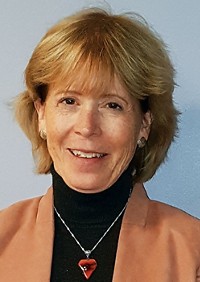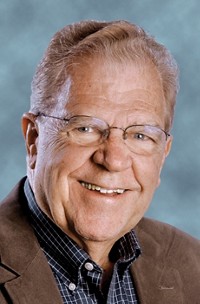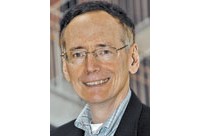Advertisement
Grab your lab coat. Let's get started
Welcome!
Welcome!
Create an account below to get 6 C&EN articles per month, receive newsletters and more - all free.
It seems this is your first time logging in online. Please enter the following information to continue.
As an ACS member you automatically get access to this site. All we need is few more details to create your reading experience.
Not you? Sign in with a different account.
Not you? Sign in with a different account.
ERROR 1
ERROR 1
ERROR 2
ERROR 2
ERROR 2
ERROR 2
ERROR 2
Password and Confirm password must match.
If you have an ACS member number, please enter it here so we can link this account to your membership. (optional)
ERROR 2
ACS values your privacy. By submitting your information, you are gaining access to C&EN and subscribing to our weekly newsletter. We use the information you provide to make your reading experience better, and we will never sell your data to third party members.
Synthesis
F. Albert Cotton Award In Synthetic Inorganic Chemistry
Recipients are honored for contributions of major significance to chemistry
by Stephen K. Ritter
February 2, 2009
| A version of this story appeared in
Volume 87, Issue 5
Sponsored by the F. Albert Cotton Endowment Fund
Copper-molecular oxygen complexes serve as important synthetic models of enzymes that bind and activate O2 and are involved in many oxidative environmental and physiological chemical processes. Kenneth D. Karlin, the Ira Remsen Professor of Chemistry at Johns Hopkins University, is being honored for his creative use of ligand design and low-temperature solution techniques to synthesize these elusive molecules.
Karlin's pioneering efforts "have led to the invention of the whole subfield of copper-dioxygen synthetic chemistry with bioinorganic relevance," Stanford University chemistry professor Edward I. Solomon says. "The work is most impressive, carefully executed, and thoroughly characterized, attesting to Karlin's synthetic chemistry prowess."
His "most striking" achievement, Solomon notes, is the 1988 synthesis and X-ray structure determination of the first dicopper-O2 complex, a species that contains a Cu–O2–Cu bridge. Karlin also discovered that the complex's precursor reversibly binds both O2 and CO, a result with broad implications for inorganic and biological chemists, Solomon says. For example, Karlin's group showed that the dicopper-O2 complex can hydroxylate an aromatic ring, the first such observation for any nonheme transition-metal complex.
That initial work by Karlin and colleagues led to the discovery of the synthetic interconversion of peroxo, hydroperoxo, and superoxo species. All these reactions had to be carried out in solution at –80 ºC because of the reactivity and transient nature of the complexes. The group even obtained crystals and carried out X-ray structural analysis at –80 ºC, an accomplishment that "was the first of its kind and established a paradigm for the entire bioinorganic field," Massachusetts Institute of Technology professor Stephen J. Lippard notes.
More recently, Karlin and coworkers have studied iron-copper binuclear assemblies and their related O2 chemistry. These complexes, which have Fe–O2–Cu linkages, are important in the bioinorganic arena as models for cytochrome c oxidase, an enzyme that binds and reduces O2. Karlin's group has additionally synthesized and characterized biologically relevant copper nitrosyl, copper sulfur, and heme/nonheme diiron complexes.
Karlin, 60, received a B.S. in chemistry in 1970 from Stanford University and earned a Ph.D. in chemistry in 1975 in Lippard's lab, then at Columbia University. After postdoctoral work at the University of Cambridge, he began his career in 1977 at the State University of New York, Albany, where he rose to the rank of full professor. In 1990, Karlin moved to Johns Hopkins.
He is the author of more than 260 research papers and coeditor of several books on copper chemistry. One of Karlin's many contributions to the inorganic community has been his service as editor of the "Progress in Inorganic Chemistry" annual book series since 1992. Karlin has also served on the editorial boards of several journals, as a panel member of an NIH study section, and as chair of the Bioinorganic Subdivision of ACS's Division of Inorganic Chemistry. In addition, he has organized several national and international conferences on bioinorganic chemistry, including the Gordon Research Conference on Metals in Biology.
Karlin will present the award address before the Division of Inorganic Chemistry.






Join the conversation
Contact the reporter
Submit a Letter to the Editor for publication
Engage with us on Twitter